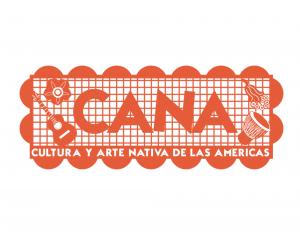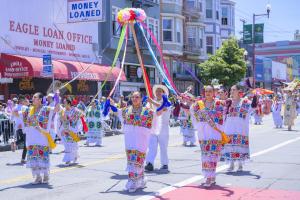Photo by Kyle Adler
.
DATE OF PARADE: Sunday, May 24, 2026
EARLY BIRD APPLICATION DEADLINE: Sunday, February 15, 2026 by 11:59 pm
LATE APPLICATION DEADLINE: Sunday, March 15, 2026 by 11:59 pm
DEFINITION OF A COMPARSA
A comparsa is an artistic, street theater performance group with its own theme, cast of dancers, musicians, other performers, with choreography, costumes, props, and floats. A comparsa creates a new theme for each annual Carnaval San Francisco. To express this theme a comparsa builds a new float, choreographs new dances, performs new music, and sews/buys new costumes. Comparsas must have at least 30 dance performers, not including volunteers. A community organization, local business, company, government agency, or political entity is not a comparsa.
JUDGING CATEGORIES
- Contemporary / World Fusion
- Traditional / Folkloric
- Brazilian
- Caribbean
- Children & Youth
PLACING
*$700 to the 1st place winners of each category
*There will be no more OVERALL WINNERS.
Contemporary / World Fusion: 1st, 2nd, 3rd
Traditional / Folkloric: 1st, 2nd, 3rd
Brazilian: 1st, 2nd, 3rd
Caribbean: 1st, 2nd, 3rd
Children & Youth: 1st, 2nd, 3rd
JUDGING CRITERIA
Perpetual Motion (1 or 5): Judges look to see whether comparsas continually move ahead while passing the judges’ stage. Comparsas may move sideways to face judges while passing but must continue to move forward at all times. This improves safety on the route, and assists parade flow and time management.
Harmony/Balance of Form and Color (1-10): Judges look for visual cohesion in the presentation of each comparsa’s theme colors/patterns, or within each comparsa’s chosen colors/patterns if no theme is stated. Every comparsa member should support the theme colors in their dress or decoration. Judges also look for regularity of line formation in general, and symmetry and discipline of movement within choreographies.
Clarity of Comparsa Theme (1-10): Judges look for adherence to the comparsa’s stated theme. They notice whether costumes/regalia, floats, and other featured visual components are related to the comparsa’s theme. Every comparsa member should represent the theme in their dress or decoration.
Standout Costumes/Regalia (1-10): ‘Standout’ means special or noticeable. Judges will look for details. If your comparsa’s costumes or regalia are hand-embroidered, etc., or if there is a specialty feature that judges should look for, comparsas should include it in their description of theme. Remember that comparsas proceed past the judges quickly - help them notice what is most important.
Music (1-10): Judges listen for audible, vibrant music that is appropriate to each comparsa’s theme, whether recorded or live. Music should be motivating to dancers and appreciable by judges and spectators.
Dance (1-10): Judges look for dynamic choreographies appropriate to the comparsa’s stated theme. They notice technical skill and cohesion of motion and gesture, along with symmetry, regularity and discipline of movement.
Carnaval Spirit (1-10): Judges look for smiles, waves and interaction with spectators when appropriate to the comparsa. When not appropriate, judges will look for grace, composure and dignity of comparsa members.
Creativity & Authenticity (1-10): Judges look for uniqueness and dedication to detail in each comparsa’s presentation. Judges look to see that comparsas represent their themes with
cultural respect, awareness and humility.
QUESTIONS OR INQUIRIES ABOUT THE PARADE
Arturo Carrillo, Parade Director: arturo@carnavalsf.org or
Marisol Melara, Parade Coordinator: marisol@carnavalsf.org




